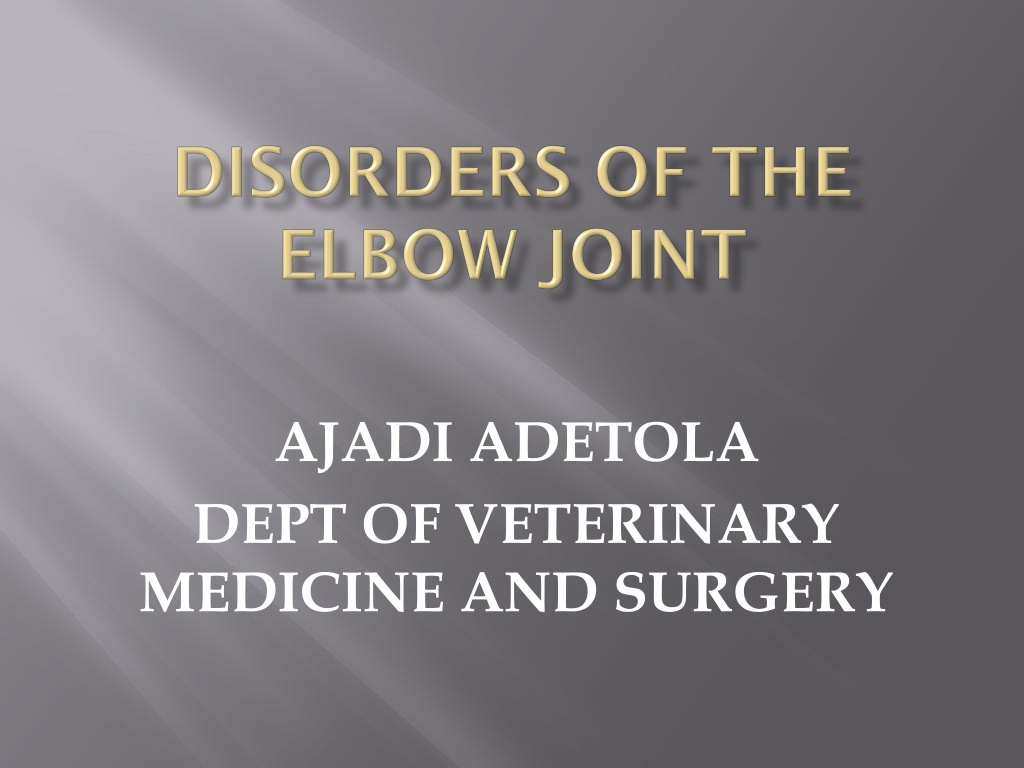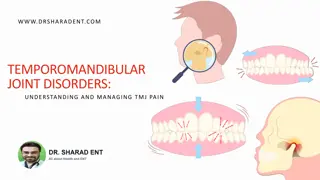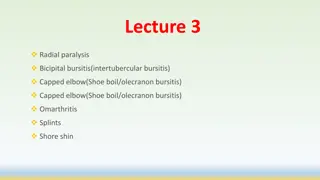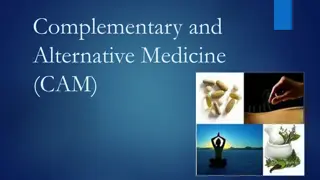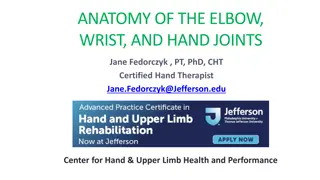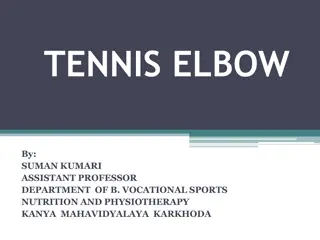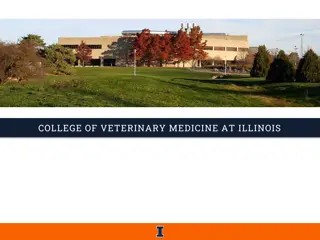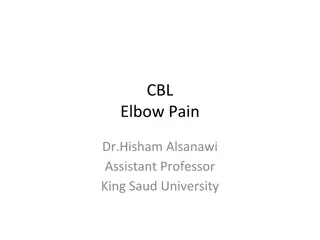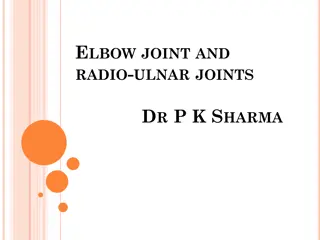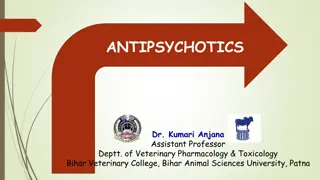Understanding Elbow Joint Disorders in Veterinary Medicine
The elbow joint is a true diathrodial joint formed by the articulation of various structures. Disorders such as elbow luxation, un-united anconeal process, and fragmented coronoid process can lead to lameness and other clinical signs in animals. Causes include osteochondritis dissecans and trauma, while aetiology factors involve trauma, hereditary predisposition, and over-supplementation with calcium or copper. Clinical signs may include lameness, crepitation, and muscle atrophy. Diagnostic imaging techniques like arthrograms and CT scans can help in identifying these conditions. Radiographic features such as a radiolucent line and osteophytes are common findings in affected joints.
Download Presentation

Please find below an Image/Link to download the presentation.
The content on the website is provided AS IS for your information and personal use only. It may not be sold, licensed, or shared on other websites without obtaining consent from the author. Download presentation by click this link. If you encounter any issues during the download, it is possible that the publisher has removed the file from their server.
E N D
Presentation Transcript
AJADI ADETOLA DEPT OF VETERINARY MEDICINE AND SURGERY
A true diathrodial joint Formed by the articulation of the epicondyles of the humerus, the condyles of the humerus, the radius and the ulna. Joint is stabilized by the medial and lateral collateral ligaments from the humeral condyle to the head of radius.
Elbow luxation: disarticulation of the radius from the humeral epicondyles. Un-united anconeal process: Non fusion of the anconeal process to the proximal ulna. Fragmented coronoid process: Osteochondritis dissecans of the medial humeral condyle: a degenerative disorder of the articular cartilage of the elbow joint. Other conditions which have been reported infrequently are: fracture of the anconeal process, condylar fracture of the humerus.
Causes: Osteochondritis dissecans of the medial humeral condyle Fragmented coronoid process Un-united anconeal process
Aetiology: Trauma Hereditary predisposition Over supplementation with either calcium or copper.
Clinical Signs Intermittent forelimbs lameness Crepitation and swelling of caudolateral capsule Tenderness over the area of medial collateral ligament Muscle atrophy
Flexed lateral Extended lateral Antero-posterior Latero-medial, cranio-caudal oblique Arthrogram will reveal cartilage flap or mouse Computed tomography (CT) scan
Radiolucent line separating the anconeal process from the olecranon (un-united anconeal process) Poor definition of the cranial margin of the medial coronoid process (FCP) Osteophytes formation on the proximal margin of the anconeal process and the lateral epicondyles (FCP) Subchondral bone sclerosis proximal to the radio-ulna articulation and adjacent to the trochlear notch (OCD) Large osteophytes around the medial coronoid process, as well as degenerative peri-articular osteophyte formation (OCD)
Multi-modal approach NSAID and Opioid analgesics DMOA Natriceuticals Surgery Physiotherapy Weight control Exercise Others
A lag screw can be used in the case of un-united anconeal process or fracture of the anconeal process Cartilage flap should be curetted while osteophytes are removed with periosteal elevator External immobilization can be provided with Thomas splint or padded bandage. Non steroidal anti-inflammatory drugs e.g. carprofen, piroxicam should be administered to relieve pain Disease modifying osteoarthritic agent (DMOA) such as glycosaminoglycans should be considered in cases of degenerative disorders.
Longitudinal myotomy of the flexor carpi radialis Osteotomy of the medial epicondyle Tenotomy of pronator teres Triceps tenotomy Olecranon osteotomy Medial collateral ligament desmotomy
Require less instrumentation It is less painful Post-operative complication is minimal Allow access to the medial aspect of the joint capsule
